vincent street
vincent street
Built for glove-trade workers
Vincent Street was built by William Tucker in the 1890s on orchard land lying between Reckleford and Vicarage Street as shown on the maps below. Vincent Street ran north from Vicarage Street, turning 90° west to join Market Street. The terrace of houses on the north side of this section of Vincent Street, called Landsdowne Terrace, were built in 1889 and still survive.
William Tucker was a glover who ran the Glovers Arms from at least 1871 until his death at the turn of the century. However he was an entrepreneur with wide interests and he expanded into glove manufacturing, having invested in the business of F Blake & Co just a few doors along in Reckleford.
When William began investing in town development and providing speculative housing for glove workers, he named two of the roads he built after members of his family; Earle Street after his son and Vincent Street, as well as Vincent Place, after his wife's maiden name. The rest of the development were Cecil Street and Salisbury Terrace in Reckleford - both named after the Prime Minister of the time, Lord Salisbury, whose family name was Cecil.
Other developments William initiated, which were continued and expanded after his death in 1899 by his son, William Earle Tucker, included Victoria Road, St Michael's Road, and Lyde Road.
In the 'Homeland Handbook' of 1906 it was noted that the Salvation Army "have barracks in Vincent Street."
The north-south section of Vincent Street, between Vicarage Street and Vincent Place, was completely demolished in 1983 for the development of the Quedam shopping centre and the bus station.
Check out the page on Phillips' Glove Factory in Vincent Street.
MAPs
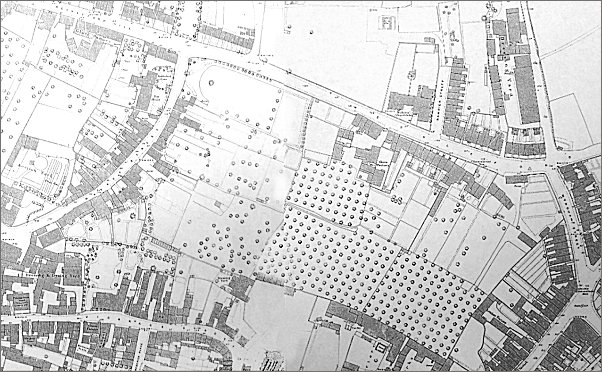
Map based on the 1886 Ordnance Survey showing the undeveloped area between Reckleford, seen running across the top of the map, and Vicarage Street in the lower left corner.
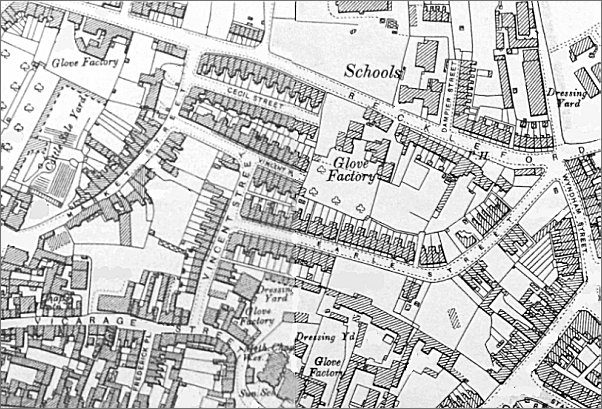
Map based on the 1901 Ordnance Survey showing the same area developed with Earle Street, Vincent Street, Vincent Place and Cecil Street.
gallery
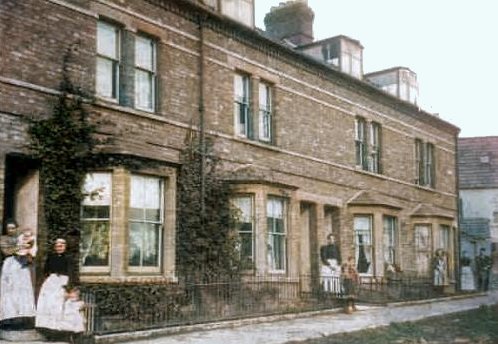
Courtesy of John
Palmer
Houses and residents in Vincent Street, in a colourised photograph of around 1905.
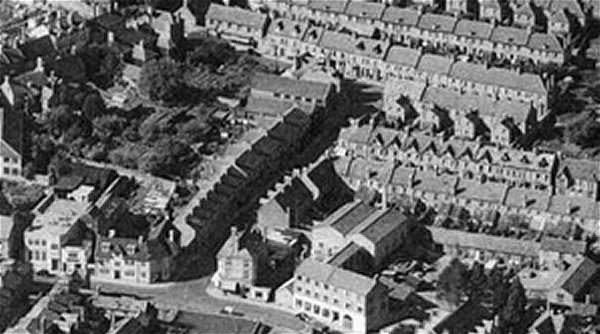
This aerial photograph of 1953 shows part of Vicarage Street at bottom left with Vincent Street running up the centre of the photograph to join Vincent Place at the top. Earle Street runs in from centre right.

From the Cave
Collection
(colourised),
Courtesy of South Somerset Heritage Collection
Looking down Vincent Street from Vicarage Street with the Albion Inn on the western corner and the Army & Navy Stores on the eastern corner. Photographed in the mid-1960s.
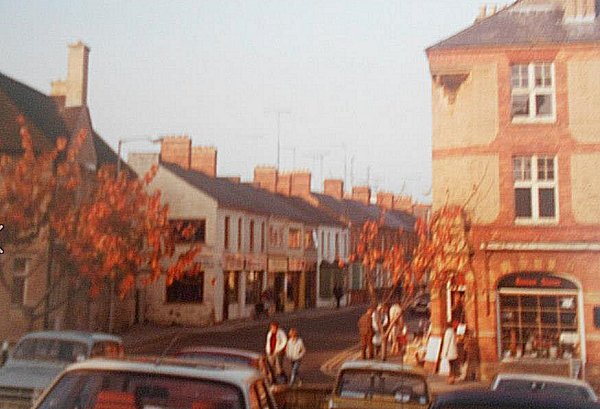
Courtesy
of Helen Extance
Looking down Vincent Street from Vicarage Street car park, 1982.
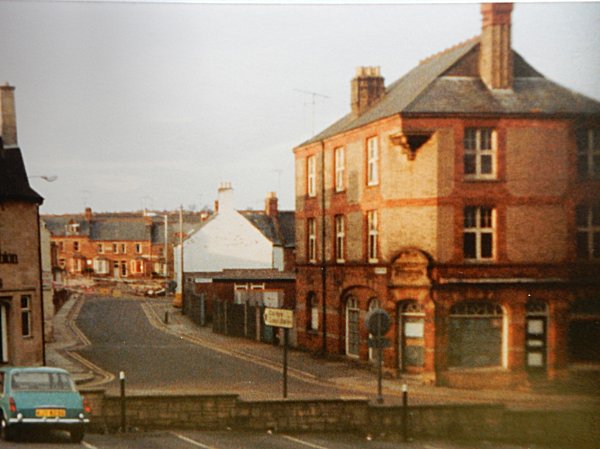
Courtesy of
Vivien and John
Cornelius
Vincent Street with the old Army & Navy stores empty and boarded up, photographed in 1983.
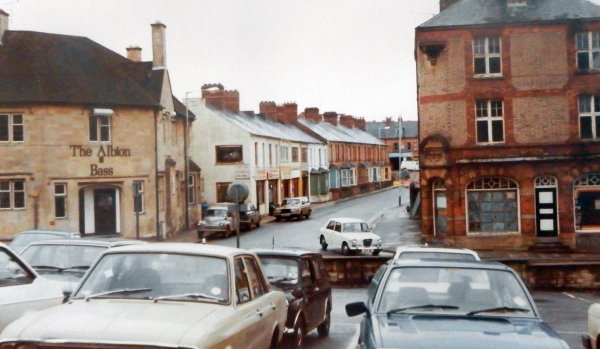
Vincent Street seen from Vicarage Street car park, photographed on 6 April 1983.
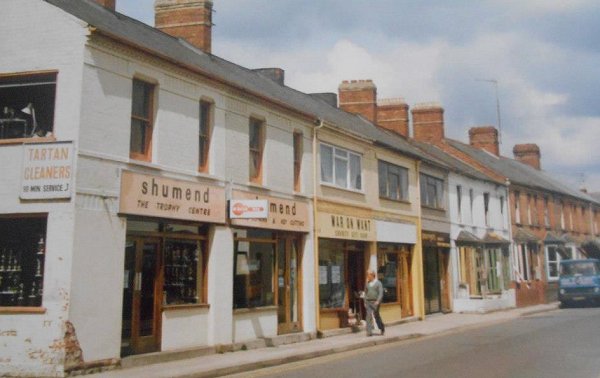
This
photograph
features in my
book "Lost Yeovil"
A closer view of the Vincent Street shops. Photographed in 1982, shortly before demolition.
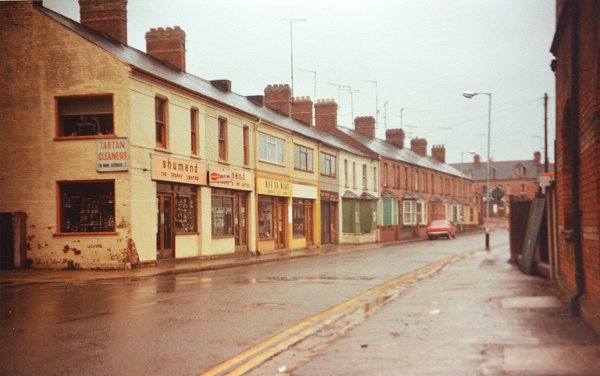
Courtesy of
Chris Rendell
Almost the same view, photographed in 1983.
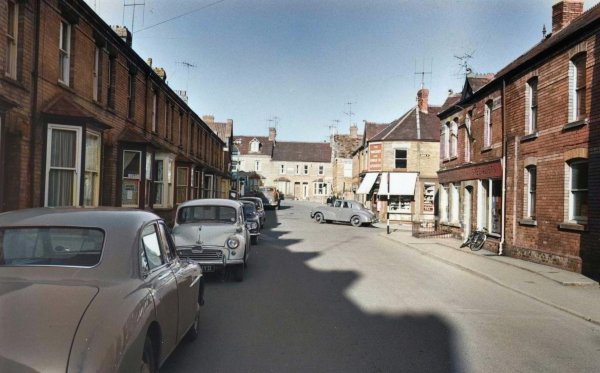 From the Cave
Collection
(colourised),
Courtesy of South Somerset Heritage Collection
From the Cave
Collection
(colourised),
Courtesy of South Somerset Heritage Collection
Looking north along Vincent Street photographed in the 1960s. At right is the junction of Earle Street with the 'Vincent and Earle Street Stores' on the corner. Between 1897 and 1908 this was the home and bakery of Edward Field.
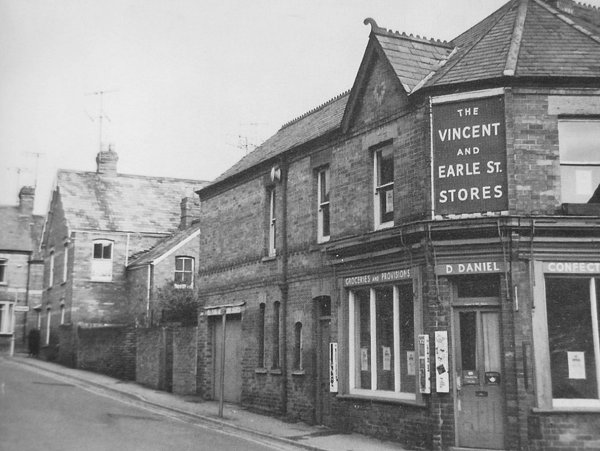
The Vincent and Earle Street Stores, with Earle Street off to the right. At left is the back of the first house on the south side of Vincent Place. Photographed in the 1960s.
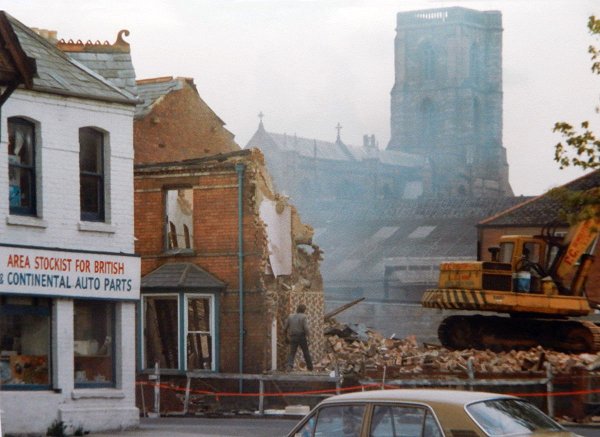
Courtesy of Rob
Baker
The demolition of Vincent Street begins in 1983.
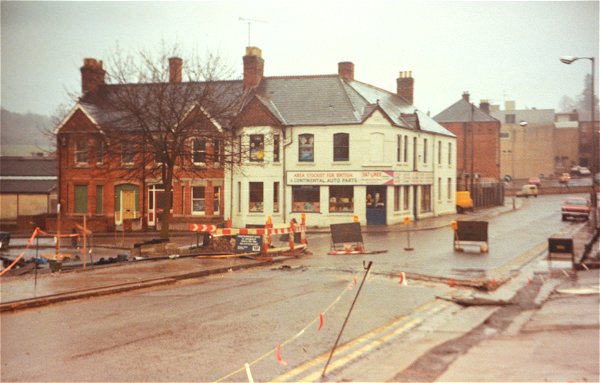
Courtesy of
Chris Rendell
Looking south along Vincent Street towards Vicarage Street in 1983. Earle Street comes in from the left although the Vincent and Earle Street Stores has now been demolished.
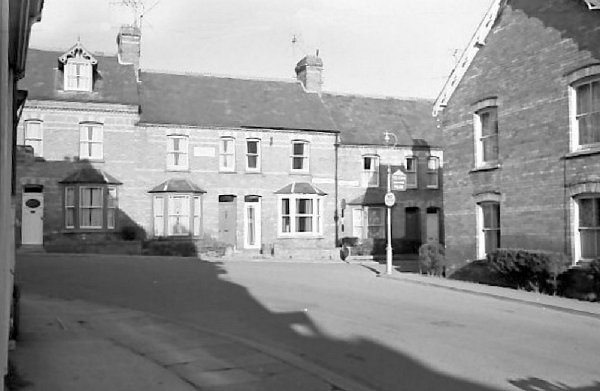
This 1960's photograph is at the bend in Vincent Street, which continues to the left, with the entrance to Vincent Place at right. Above the street sign on the black and white pole are the street nameplates for Vincent Street and Vincent Place side-by-side - they still survive, see below. The stone on the wall at first floor level is the 'Landsdowne Terrace' datestone photographed below.
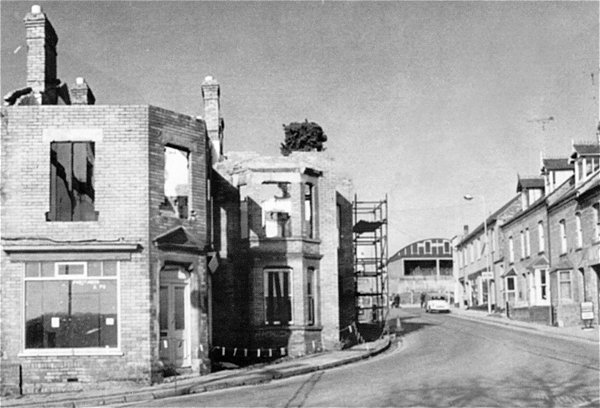
Courtesy of the
Western Gazette
The demolition
of the south
side of Vincent
Street begins in
this photograph
of 1983. Taken
from the
90º
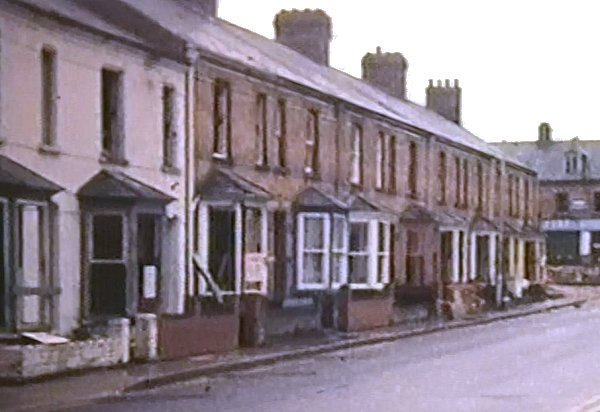
The western side of Vincent Street with empty houses about to be demolished.
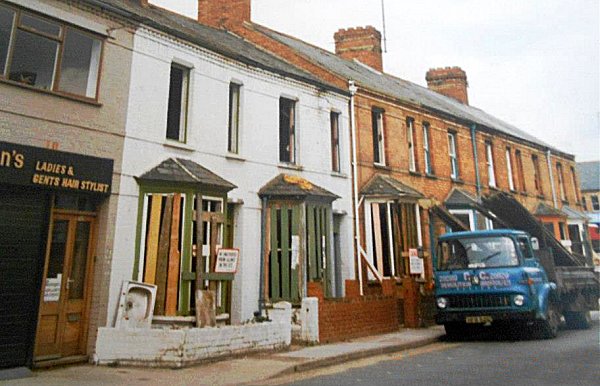
Courtesy
of Helen Extance
Seen from closer to Vicarage Street, all the houses are boarded up and await demolition. 1982.
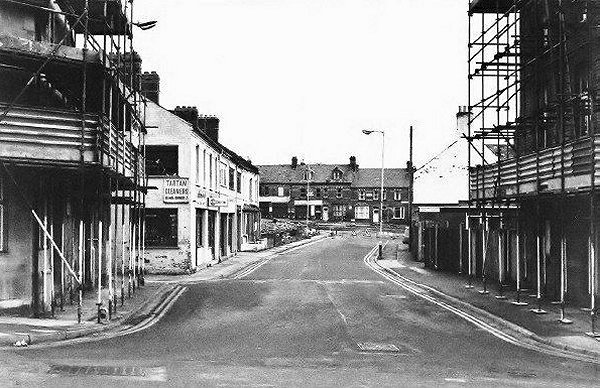
Demolition of Vincent Street begins. Who remembers the Tartan Cleaners?
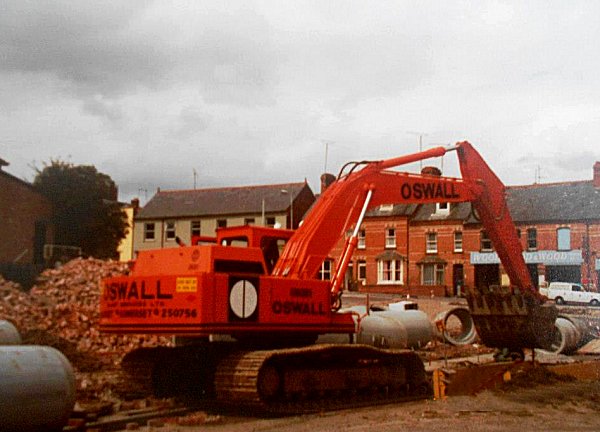
Courtesy
of Helen Extance
The demolition of Vincent Street began by the junction with Vincent Place in 1982. The buildings in the background were the only survivors of the demolition.
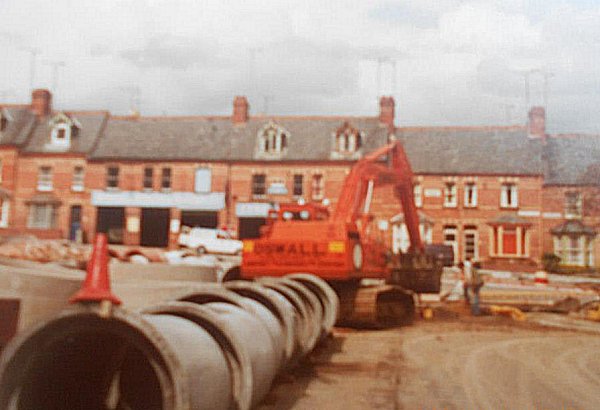
Courtesy
of Helen Extance
Looking further right than the previous photograph, looking at the surviving houses in Vincent Street and Vincent Place.
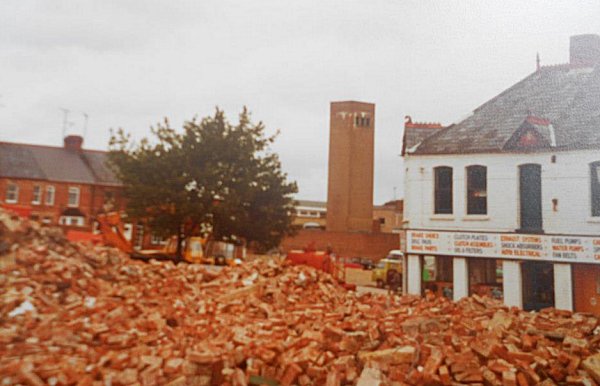
Courtesy
of Helen Extance
.... and looking right even further.
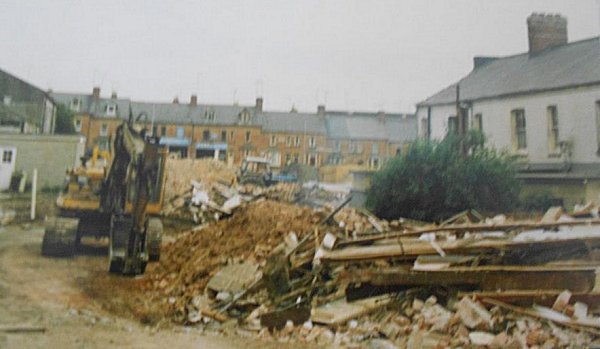
Courtesy
of Helen Extance
Looking north from the ruins of some Vincent Street houses towards Vincent Place at back.
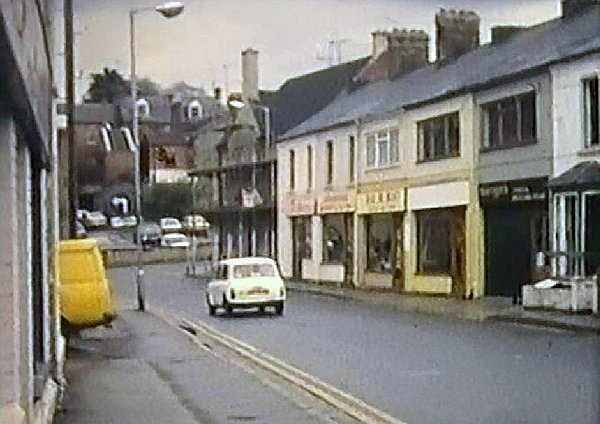
Vincent Street, approaching Vicarage Street, in the 1970s. Mervyn's hairdressers at right.
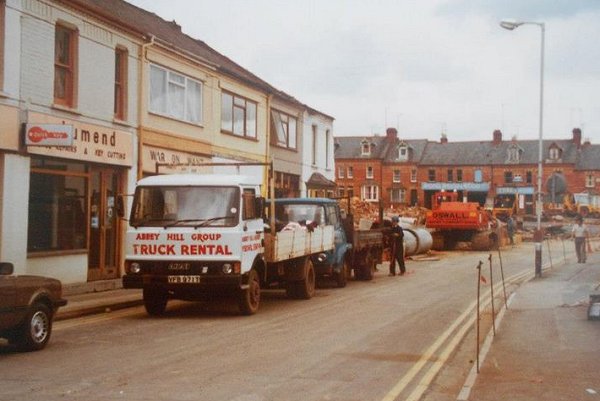
Courtesy
of Helen Extance
The demolition of Vincent Street continues.
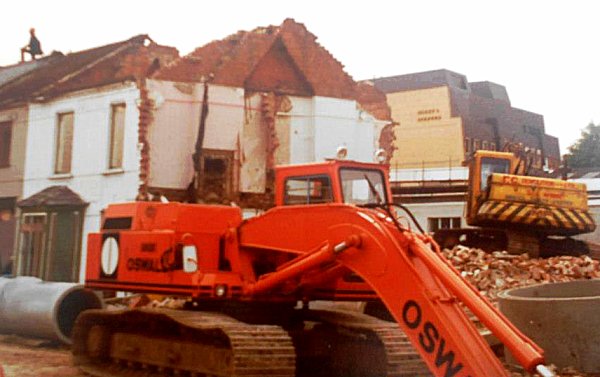
Courtesy
of Helen Extance
.... and continues ....
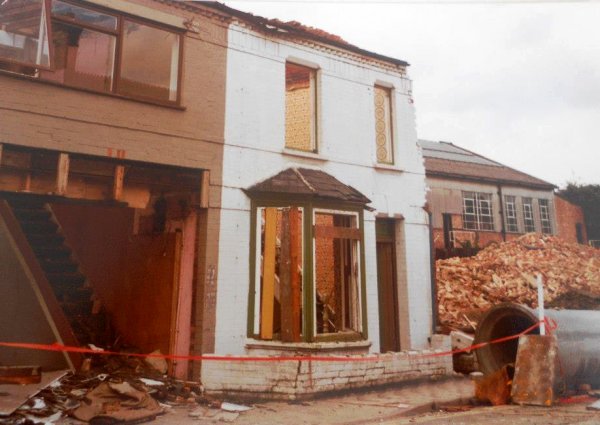
Courtesy
of Helen Extance
.... and continues .... Mervyn's hairdressers shop-front gone at left.
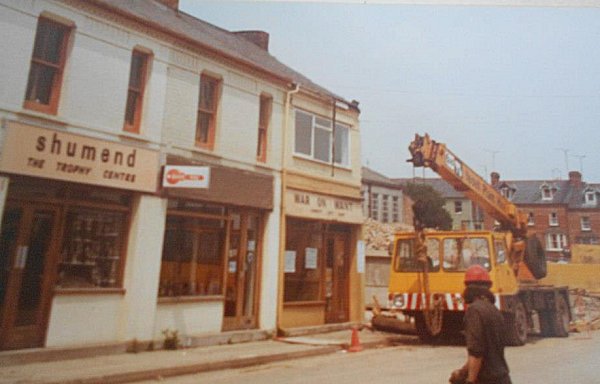
Courtesy
of Helen Extance
.... and continues .... Mervyn's and the house next door now gone.
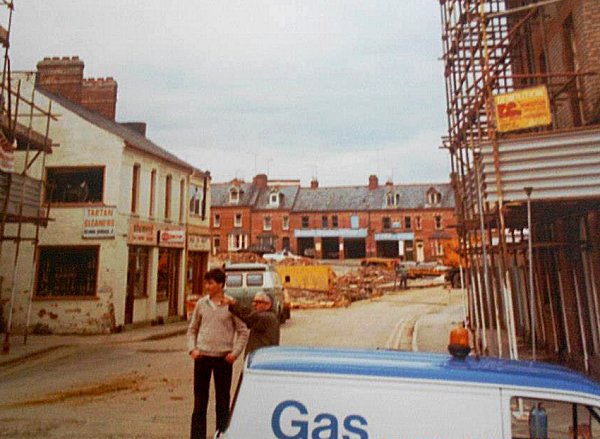
Courtesy
of Helen Extance
.... and continues .... the broader view from Vicarage Street.
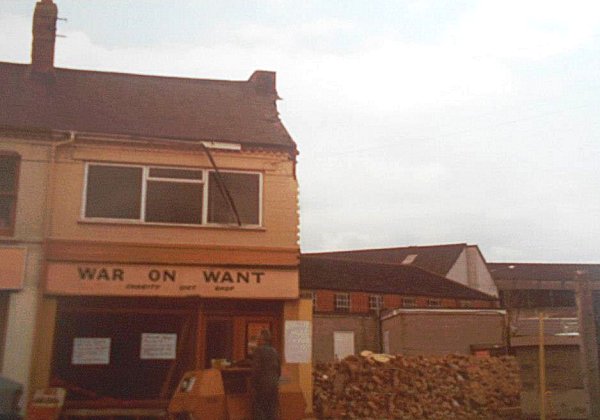
Courtesy
of Helen Extance
.... and continues .... War on Want is next.
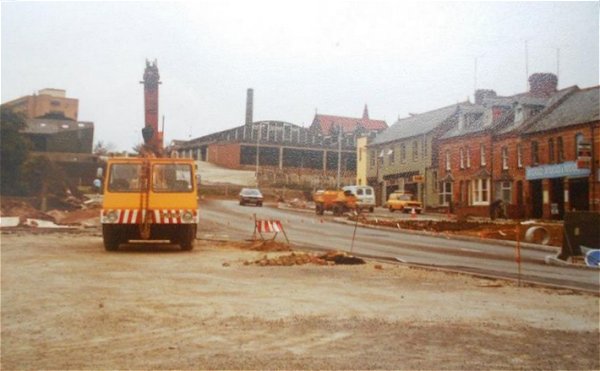
Courtesy
of Helen Extance
Houses in Vincent Street and Vincent Place escape the obliteration of Vicarage Street in 1983.
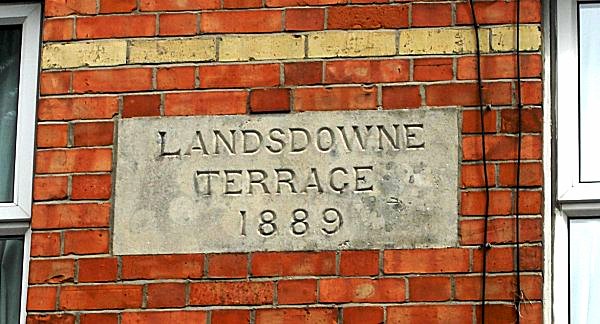
The Landsdowne Terrace datestone mentioned above. Photographed in 2013.
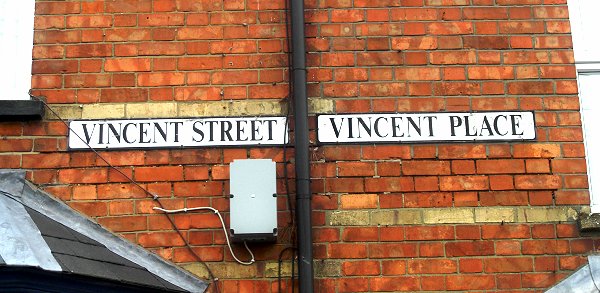
The Vincent Street and Vincent Place street nameplates as referred to above. Photographed in 2013.
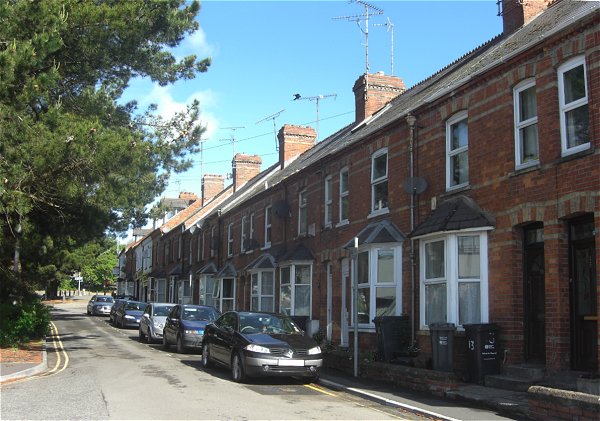
The last remnants of Vincent Street and Vincent Place - the junction is by the fourth car from the right. Note the trees at left. Photographed in 2013.
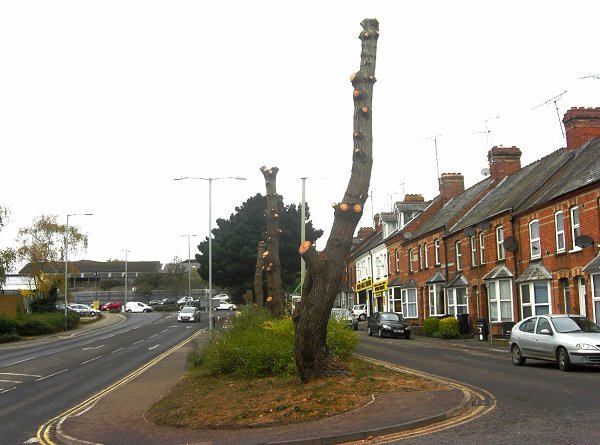
The deforestation of Yeovil - a light 'pruning' of the trees in front of Vincent Street / Vincent Place in November 2013.
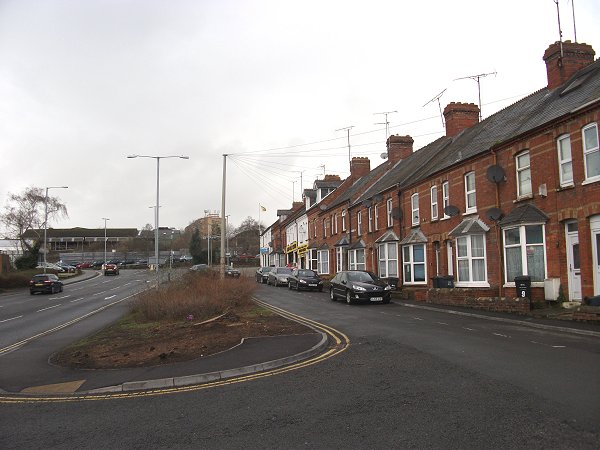
.... and there they were - gone! in January 2014.
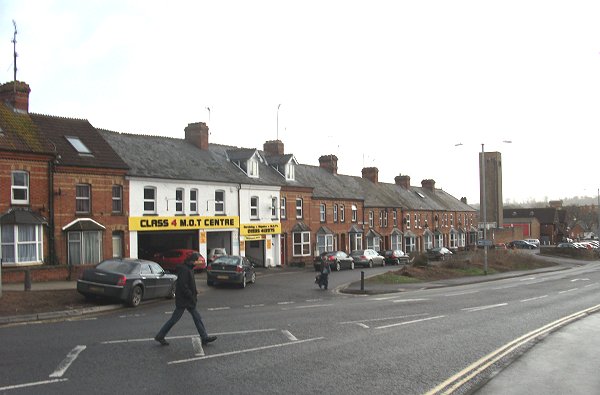
It's now possible to get a better view of the remaining houses in Vincent Street and Vincent Place after the removal of the trees. Photographed in January 2014.